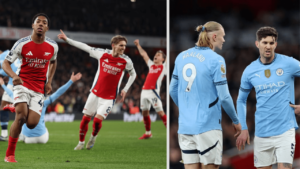Syringomyelia is a rare neurological disorder that affects the spinal cord, leading to a wide range of debilitating symptoms. By understanding how this disorder impacts the nervous system, individuals can make informed decisions regarding their health and treatment.

Syringomyelia is a rare and complex neurological condition characterized by the formation of a syrinx—a fluid-filled cyst—in the spinal cord. From minor discomfort to severe neurological problems, this disorder can cause progressive damage to the spinal cord and interfere with its regular functioning. Despite the lack of widespread awareness, managing the condition’s consequences on a patient’s life and preventing complications require early diagnosis and appropriate treatment.
We will examine the causes, signs, and available treatments for syringomyelia in this post to provide readers a thorough grasp of this difficult illness.
What is Syringomyelia?
Syringomyelia is defined by the presence of a cyst or cavity (syrinx) within the spinal cord, typically in the cervical (neck) or thoracic (upper back) regions. This syrinx may lengthen and enlarge with time, applying pressure to the tissues around the spinal cord and resulting in a variety of neurological problems.
The disorder may be developed later in life as a result of trauma or other spinal anomalies, or it may be congenital (existing from birth). Despite individual differences in symptom severity and onset, syringomyelia usually advances slowly.
Causes of Syringomyelia
Several underlying factors can contribute to the development of syringomyelia. Some most common causes include:
Chiari Malformation
The most frequent cause of syringomyelia is a Chiari malformation, a condition where the lower part of the brain (the cerebellum) extends into the spinal canal, disrupting the normal flow of cerebrospinal fluid (CSF). This disruption can create pressure differences that contribute to the formation of a syrinx in the spinal cord.
Spinal Cord Trauma
Physical injury to the spinal cord can also lead to syringomyelia. Trauma disrupts the flow of CSF, potentially causing fluid to accumulate within the spinal cord. Injuries such as car accidents, falls, or sports-related trauma can trigger the condition, often years after the initial injury.
Spinal Tumors
The presence of a tumor near the spinal cord can block the normal flow of CSF, leading to the development of a syrinx. Tumors can either grow directly within the spinal cord or compress it from the outside, causing fluid buildup.
Inflammatory Conditions
Conditions such as arachnoiditis, where the membrane surrounding the spinal cord becomes inflamed, can disrupt CSF flow and contribute to syrinx formation. Inflammation may arise due to infections, surgeries, or other factors.
Meningitis
Meningitis, an infection of the protective membranes surrounding the brain and spinal cord, can cause scarring or blockage that affects the movement of CSF, potentially leading to syringomyelia.
Symptoms of Syringomyelia
The symptoms of syringomyelia vary depending on the size, location, and progression of the syrinx. In some cases, individuals may experience no symptoms at all for many years. However, as the syrinx grows and puts pressure on the spinal cord, symptoms can become more pronounced.
Pain: One of the most common symptoms is pain in the neck, shoulders, or back. This pain may be persistent or intermittent and can radiate to other areas of the body.
Loss of Sensation: Patients with syringomyelia often experience a loss of sensation, particularly to temperature and pain, in the hands, arms, or shoulders. This is known as a “cape-like” distribution of sensory loss.
Muscle Weakness: Syringomyelia can cause muscle weakness or atrophy in the arms, hands, and shoulders. In more severe cases, muscle weakness may extend to the lower limbs, affecting balance and mobility.
Stiffness: Many patients develop stiffness or spasticity in the arms and legs, which can make movement difficult and uncomfortable.
Numbness and Tingling: A common symptom of syringomyelia is a tingling or “pins and needles” sensation, usually in the hands and arms.
Bladder and Bowel Dysfunction: As the condition progresses, it may impact the nerves that control bladder and bowel function, leading to incontinence or difficulty with urination.
Scoliosis: Scoliosis, a curvature of the spine, is often seen in children with congenital syringomyelia. The presence of a syrinx can affect spinal alignment, contributing to this condition.
Diagnosis of Syringomyelia
If syringomyelia is suspected, a physician will typically order imaging tests to confirm the diagnosis. Magnetic resonance imaging (MRI) is the most effective tool for detecting the presence of a syrinx in the spinal cord. In some cases, an MRI with contrast may be used to obtain more detailed images of the spinal cord and surrounding tissues.
Additional tests such as a CT scan or a myelogram (a specialized X-ray of the spinal cord) may also be performed to assess the severity of the condition and identify any contributing factors, such as tumors or Chiari malformation.
Treatment Options for Syringomyelia
The treatment for syringomyelia depends on the severity of the condition and the underlying cause. In some cases, no treatment may be necessary if the syrinx is small and causing minimal symptoms. However, for more advanced cases, several treatment options are available:
- Observation
For patients with mild syringomyelia and few symptoms, a “watch and wait” approach may be recommended. Regular MRI scans will be performed to monitor the size and progression of the syrinx.
- Surgery
Surgery is the most common treatment for syringomyelia, especially in cases where the syrinx is causing significant symptoms or progressing rapidly. The goal of surgery is to restore normal CSF flow and alleviate pressure on the spinal cord. Types of surgery include:
- Decompression Surgery: For patients with Chiari malformation, decompression surgery is performed to enlarge the opening at the base of the skull, relieving pressure and improving CSF flow.
- Syrinx Drainage: In some cases, a surgeon may insert a shunt to drain fluid from the syrinx and prevent it from enlarging.
- Physical Therapy
Physical therapy can help patients manage symptoms such as muscle weakness and stiffness. Strengthening exercises, stretching, and other therapeutic techniques can improve mobility and quality of life.
- Medications
While medication cannot treat syringomyelia directly, pain-relieving drugs or anti-inflammatory medications may be prescribed to manage symptoms.
In a Nutshell!
Syringomyelia is a complex neurological illness that, if not treated, can have a substantial influence on a person’s quality of life. For those who have been diagnosed with this illness, it is essential to comprehend the causes, symptoms, and potential therapies. For people with syringomyelia, early intervention and suitable therapy can help stop the disease’s progression and offer relief.
Despite being a permanent ailment, individuals have hope because of improvements in their general health and quality of life brought about by medical and surgical advancements. To ensure proper treatment and care, speaking with a neurologist or neurosurgeon is crucial for anyone who has been diagnosed with syringomyelia or is exhibiting symptoms.
Read Next:

The Psychology of Love: Why Valentines Day Matters More Epic Than You Think
Discover the psychology of love and why Valentines Day is more important than you think. Learn how love impacts the brain, strengthens relationships, and boosts

Premier League Highlights: Arsenal Humiliate Man City 5-1, Spurs and Palace Secure Crucial Wins
Arsenal demolished Manchester City 5-1 in a statement premier league highlights win, reigniting their title hopes. Meanwhile, Crystal Palace stunned Man United 2-0, and Tottenham

How Budget 2025 Impacts the Indian Middle-Class: Major Tax Benefits and Glaring Omissions
Budget 2025 offers major tax relief to the middle class, including zero tax on incomes up to ₹12 lakh. However, it misses out on incentives

Degrees vs Employability: Why “Highly Qualified Degree Holders” Struggle to Find Jobs While “Less Qualified Individuals” Get Hired Faster!
Many highly qualified individuals struggle to secure jobs, while less qualified candidates get hired quickly. This Degrees vs Employability paradox is caused by employer preferences,

The Power of Mindset: Why Looking Poor Doesn’t Make You Poor, but Thinking Poor Does!
Discover why looking poor doesn’t define your wealth but thinking poor does. Learn the power of mindset and how a growth-oriented mindset can lead to

Overthinking: How It’s Damaging Today’s Youth – Causes and Cure in 2025
Understanding how overthinking is silently damaging today’s youth, from its causes rooted in societal pressure and social media to its long-term effects on mental health.

Netaji Subhash Chandra Bose: An Epitome of Epic Leadership
Discovering the incredible life of Netaji Subhash Chandra Bose, a leader whose vision, courage, and determination redefined India’s freedom struggle. Explore his leadership qualities, ideology,

Global News Headlines Today: From Gaza Ceasefire to Blue Origin’s Massive 2025 Milestone
Explore today’s top global news headlines, from the Gaza ceasefire and Blue Origin’s historic spaceflight to Apple losing its top spot in China’s smartphone market.

The Hidden Danger of Social Media Nudity: A Threat to Today’s Youth in 2025
Understanding how social media nudity is impacting the youth and their future potential. Learn about the risks of unregulated content, cultural sensitivities, and solutions for
